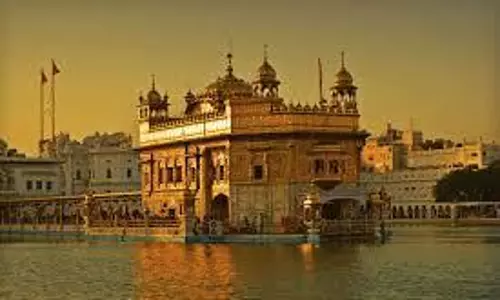
Hate speech, government and the judiciary
text_fieldsThe Supreme Court's observations on hate propaganda and TV channels' communalism draw attention to a serious issue that needs urgent corection. Tushar Gandhi had complained against Delhi Police, stating that they had violated the court order to file a case against mob attacks and those who call for them. A bench comprising Chief Justice Chandrachud raised questions about the negligence of the authorities while hearing the contempt plea.The provocative pledge led by Sudarshan News TV editor Suresh Chavhanke while attending an event of Hindu Yuva Vahini in December 2021 was a call for genocide. Delhi Police took five months to file an FIR in this incident. Wondering why there was such delay, the Chief Justice asked, "What are you doing in terms of the investigation? The FIR is registered 5 months later in May 2022. Why do you require 5 months to register an FIR?". He continued to ask, "Now, what steps you have taken after May 2022? What have you done? How many arrests have you made? What investigation have you done? How many people have been examined?. ………..After 4th of May, it has been 8 months. What progress has been made? If you register an FIR 5 months later, and 8 months after that there is no substantial progress....you tell us...".
The FIR was filed after a chiding by the court last April. Even after that, Chavhanke has also made communal remarks. The police, on the other hand, submitted an affidavit that Chavhanke did not say anything that would cause religious spite. The police was forced to file a case after the Supreme Court issued an order rejecting this. The matter before the court is the status of that case. It was about the same hate speech of Chavhanke that Justice K.M. Joseph's bench observed that anchors who spread hate on television channels should be reined in. The bench was hearing a petition against hate speeches. It has been pointed out that India is witnessing a repeat of the hate propaganda that sowed the seeds of genocide in Germany and Rwanda in the last century. The intervention of the court should be seen as an opportunity to avoid this catastrophe. The issue here is not lack of laws. Section 295A of the Indian Penal Code prohibits blasphemy; speeches that incite religious hatred are punishable accordingly. Sections 153A and B prohibit hate speech itself. News Broadcasting Standards Authority (NBSA) has been formed for self-regulation of news channels. Despite all the laws, regulations and self-regulatory mechanisms, hate campaigns have been going on unabated. One reason is that 'hate propaganda' lacks a precise definition. Another is that the authorities themselves become part of sectarianism. As a result of this, on the one hand those who are disliked by the authorities are subjected to penal action. On the other, a well-meaning law becomes a tool for media hunting. It is the same authorities who sued the news portal 'The Wire' for a mistake that was neither deliberate nor consequential, that pretended not to have heard the clear calls for violence.
On the other hand, the Supreme Court intervened when Sudarshan TV launched a 'UPSC Jihad' series alleging that minorities were infiltrating civil service. A government that does not prevent what should be prevented takes the aid of law to suppress criticism. A new report by Human Rights Watch notes that authorities in India "intensified and expanded" their crackdown on the media in 2022. The court should seriously consider the question how to proceed without undermining the freedom of the press, but ensuring that it is not misused for hate propaganda. It is a crucial challenge before the judiciary that it has to enforce justice by resisting an administration which is attached to sectarianism and majoritarianism and shows that proclivity in its actions. There needs to be clarity on what constitutes hate speech and what legal action can be taken to prevent it. It must be ensured that the law is not enforced only 'selectively' and arbitrarily. Police and bureaucracy should be detached from political interference. Legal action should be taken and awareness created against hate propaganda through media. The Supreme Court's observation that the government has the ultimate responsibility - "the buck stops with the government" as Justice KM Joseph put it - to prevent hate speech is correct. But it is up to the judiciary to ensure that they discharge that responsibility and that they discharge it impartially. In that sense, the Judiciary is now entrusted with the task to save the country from the brink of destruction.


























